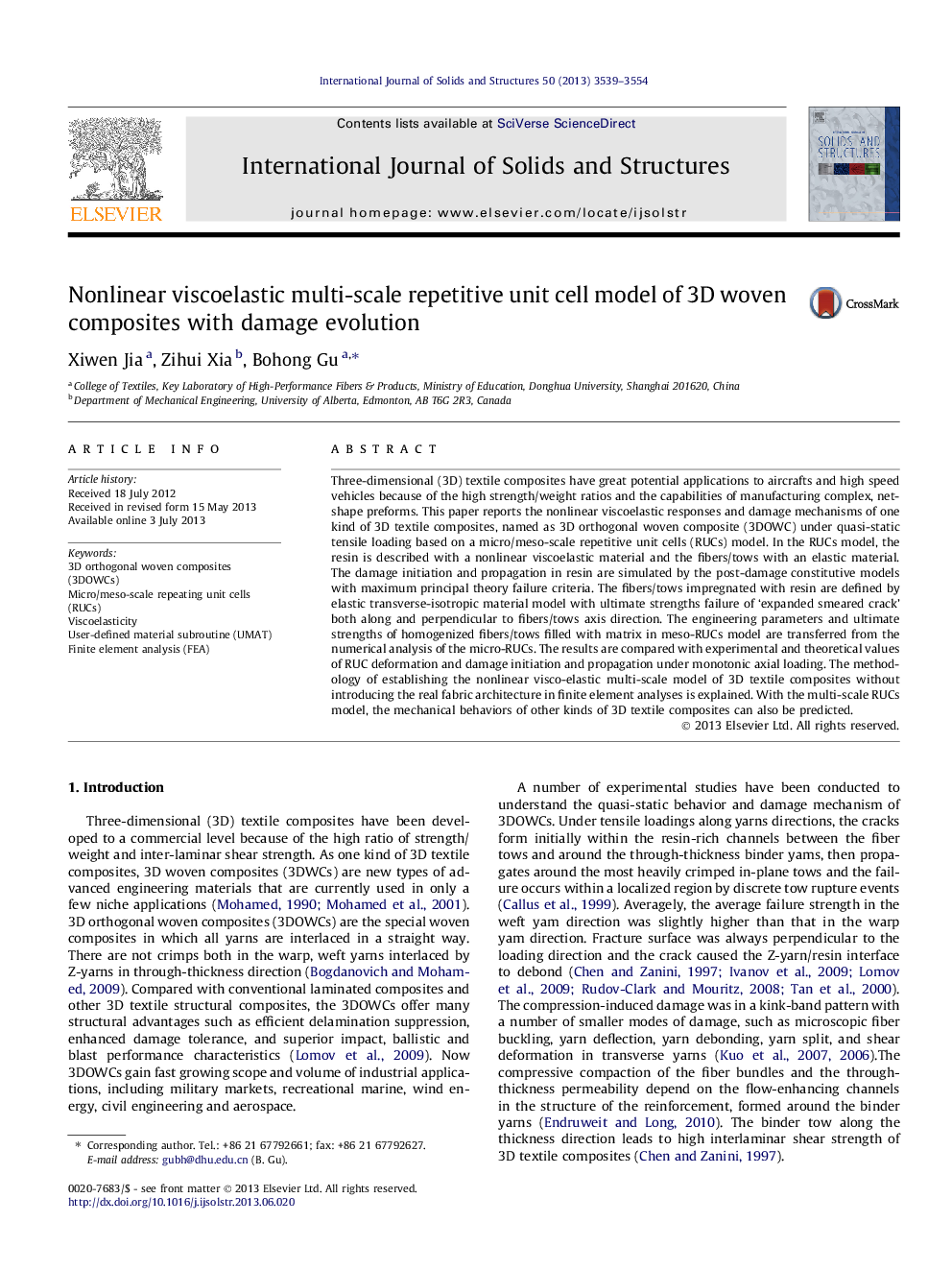| Article ID | Journal | Published Year | Pages | File Type |
|---|---|---|---|---|
| 277814 | International Journal of Solids and Structures | 2013 | 16 Pages |
•To decompose 3D woven composite into micro repeat unit cells (RUCs) and meso-RUCs.•Using finite element method to calculate tension damage based on multi-scale RUCs.•Stress distribution and crack propagation have been revealed from RUCs model.
Three-dimensional (3D) textile composites have great potential applications to aircrafts and high speed vehicles because of the high strength/weight ratios and the capabilities of manufacturing complex, net-shape preforms. This paper reports the nonlinear viscoelastic responses and damage mechanisms of one kind of 3D textile composites, named as 3D orthogonal woven composite (3DOWC) under quasi-static tensile loading based on a micro/meso-scale repetitive unit cells (RUCs) model. In the RUCs model, the resin is described with a nonlinear viscoelastic material and the fibers/tows with an elastic material. The damage initiation and propagation in resin are simulated by the post-damage constitutive models with maximum principal theory failure criteria. The fibers/tows impregnated with resin are defined by elastic transverse-isotropic material model with ultimate strengths failure of ‘expanded smeared crack’ both along and perpendicular to fibers/tows axis direction. The engineering parameters and ultimate strengths of homogenized fibers/tows filled with matrix in meso-RUCs model are transferred from the numerical analysis of the micro-RUCs. The results are compared with experimental and theoretical values of RUC deformation and damage initiation and propagation under monotonic axial loading. The methodology of establishing the nonlinear visco-elastic multi-scale model of 3D textile composites without introducing the real fabric architecture in finite element analyses is explained. With the multi-scale RUCs model, the mechanical behaviors of other kinds of 3D textile composites can also be predicted.
